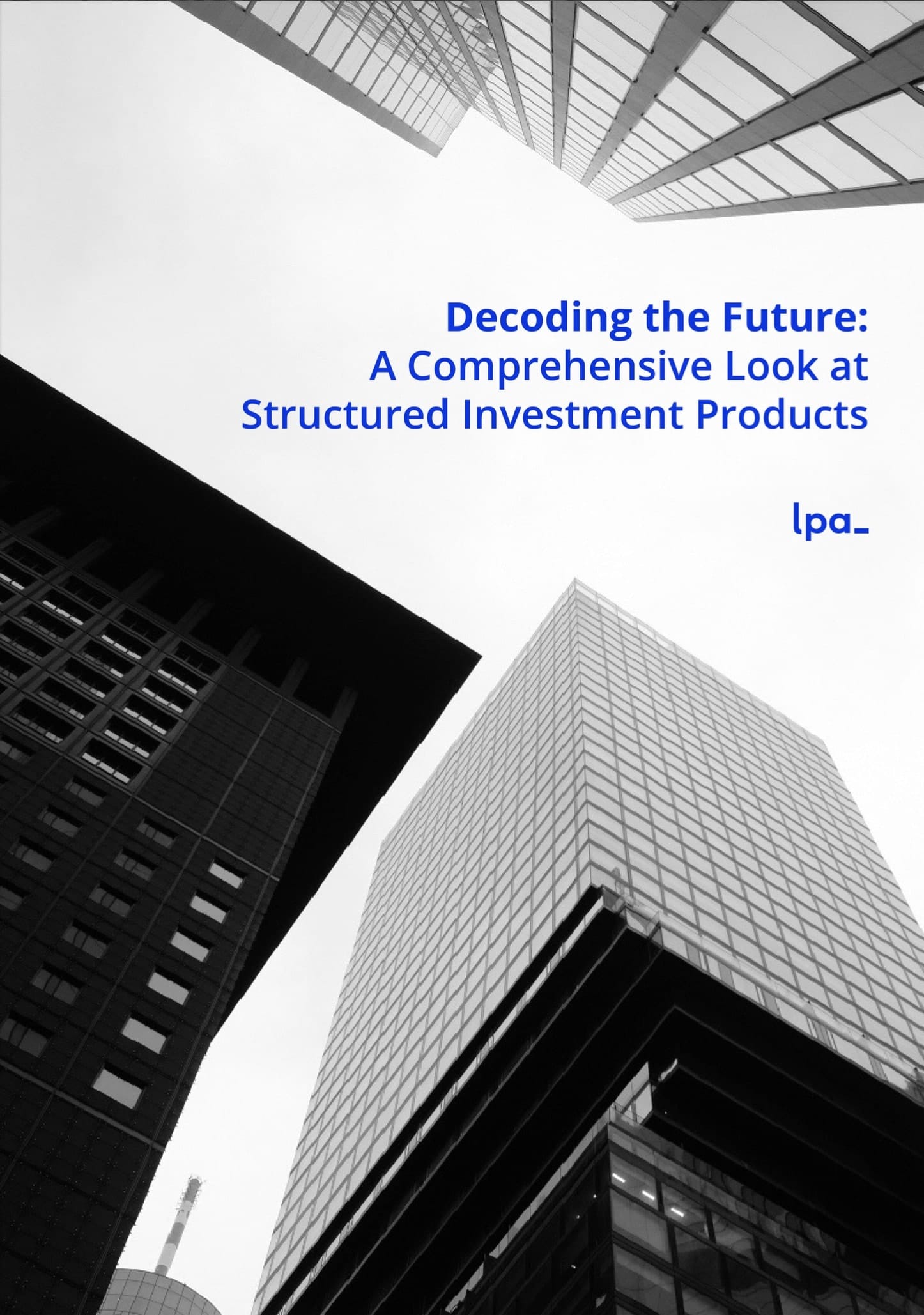
Structured Products
Comparing Structured Products in Europe and Asia
Written by Charles Kim-Régnier
Dec 21, 2023
In the constantly changing financial markets, the utilization of structured products has become a pivotal strategy for investors seeking to optimize their portfolios. This article explores the intricate world of structured products, drawing a comparison between the European and Asian markets. As these markets continue to evolve, understanding the nuances of consumer behavior, market trends, and innovative financial solutions becomes imperative.
Consumer base takeaways
Wealth Growth and Market Potential
Since 2011, Asia has been experiencing double digit annual growth in overall wealth, and surpassed Western Europe in 2016. Asia’s millionaire count grew by 45% in five years, reaching 4.4 million in 2015, and 6.2 million in 2023. Given structured products represent 4-5% of overall wealth investments in Asia, this signals substantial growth potential as this customer base grows.

Market Trends and Challenges
An examination of recent market dynamics un- veils both opportunities and challenges: South Korea experienced a 20.1% decline in structured product traded volume in 2021. UBS (China) introduced structured solutions to hedge local financial institutions’ FX and interest rate exposures. Singapore saw a rise in US market exposure through diverse trading strategies and products. Despite risks, Asian investors are more willing to take risks compared to European counterparts. The focus on regional stocks, US equities, and themes like RMB appreciation shapes Asian investment strategies.
Geographical Market Overview
North America, Asia Pacific, and Europe account for over 98% of structured product issuance. Europe dominates issuance, while Asia leads in sales volume, particularly in structured products.


Financial Products Insights
In Europe, 50% of products are in note format, and the OTC market accounts for 9%. In Asia, only 30% are in securitized format, with about 50% in deposits and an OTC format. Asian investors tend to focus regionally but show growing interest in Europe and global markets.
Investment Horizon and Payout Structures
European products have an average 2-3 year investment horizon, while Asian products have a shorter 6-month horizon. Europe supports a broader product range with 400 pay-off structures, while Asia has fewer, but this is expected to grow rapidly.
Product Preferences and Market Dynamics
In Europe, structured products account for around USD 800 billion outstanding through 3 million products. Asia ex-Japan has seen structured product volumes grow from USD 700 billion to nearly USD 800 billion. European investors favor equity-linked products (75%), while Asia’s preference is more diversified: 40% equity-linked, 50% FX-linked.
Innovation & landscape developments
Banking practices innovations (2022)
Société Générale issued daily leverage certifi- cates linked to the S&P 500 on the Singapore Exchange.
HSBC Global Private Banking launched online trading for structured products in Asia via mobile.
Maybank issued the first ever structured warrants on Hong Kong-listed stocks on Bursa Malaysia, reflecting market sales and volume growth.
Société Générale, for the first time, launched a batch of Callable bull/bear contracts (CBBCs) based on US indices in Hong Kong jurisdiction.
Automation and Solution to drive Growth (2022)
In Asia, European multi issuer platforms became important actors to deliver tailored automated solutions for trading of products. Automation is a driver of competitiveness in the region, especially given the smaller size of transactions and growth journey of Asian financial institutions. Bespoke solutions, depending on growth ambitions of banks, are considered crucial for improving product offering and overall revenue.
Structured Products: A Changing Landscape
Recent regulatory changes in Hong Kong to boost market confidence in structured products. In 2021, JP Morgan issued its first ESG-linked structured note in Hong Kong jurisdiction. ESG becomes increasingly important in APAC, with amongst others, UOB, HSBC China, and JP Morgan actively participating.
As we navigate the ever-changing terrain of structured products, this comparative analysis provides insights into the unique trajectories of Europe and Asia. From wealth accumulation and market trends to innovation and regulatory shifts, understanding these dynamics is crucial for investors, financial institutions, and policymakers alike. Join us on this journey as we unravel the complexities and opportunities in the dynamic world of structured products.
Download

Decoding the Future
This report explores the world of structured products, discussing their future in the era of automation and disruptive technologies. It gathers insights from the forefront of RegTech implementation and analyses distinctions between structured products markets in Europe and Asia.
Author

Charles Kim-Régnier
Sales Manager, Germany
Related News
Written by Sandro Schmid
Discover the Art of Generative AI
8 Mar, 2024
Written by Sophia Pfannes
Solving the Paradox Between AI Aspirations and Persistent Paper Requirements in Financial Documentation
21 Dec, 2023
Written by Sahak Artazyan
Navigating the Future of the Structured Products Market
21 Dec, 2023
Written by Gonzalo Plana
At the forefront of RegTech: a chat with Navin Sangtani, LPA’s Client Delivery expert
21 Dec, 2023
Written by Charles Kim-Régnier
Comparing Structured Products in Europe and Asia
21 Dec, 2023
Written by Julie Bradini
A Beginner’s Guide to Crypto and Blockchain in Structured Products
21 Dec, 2023